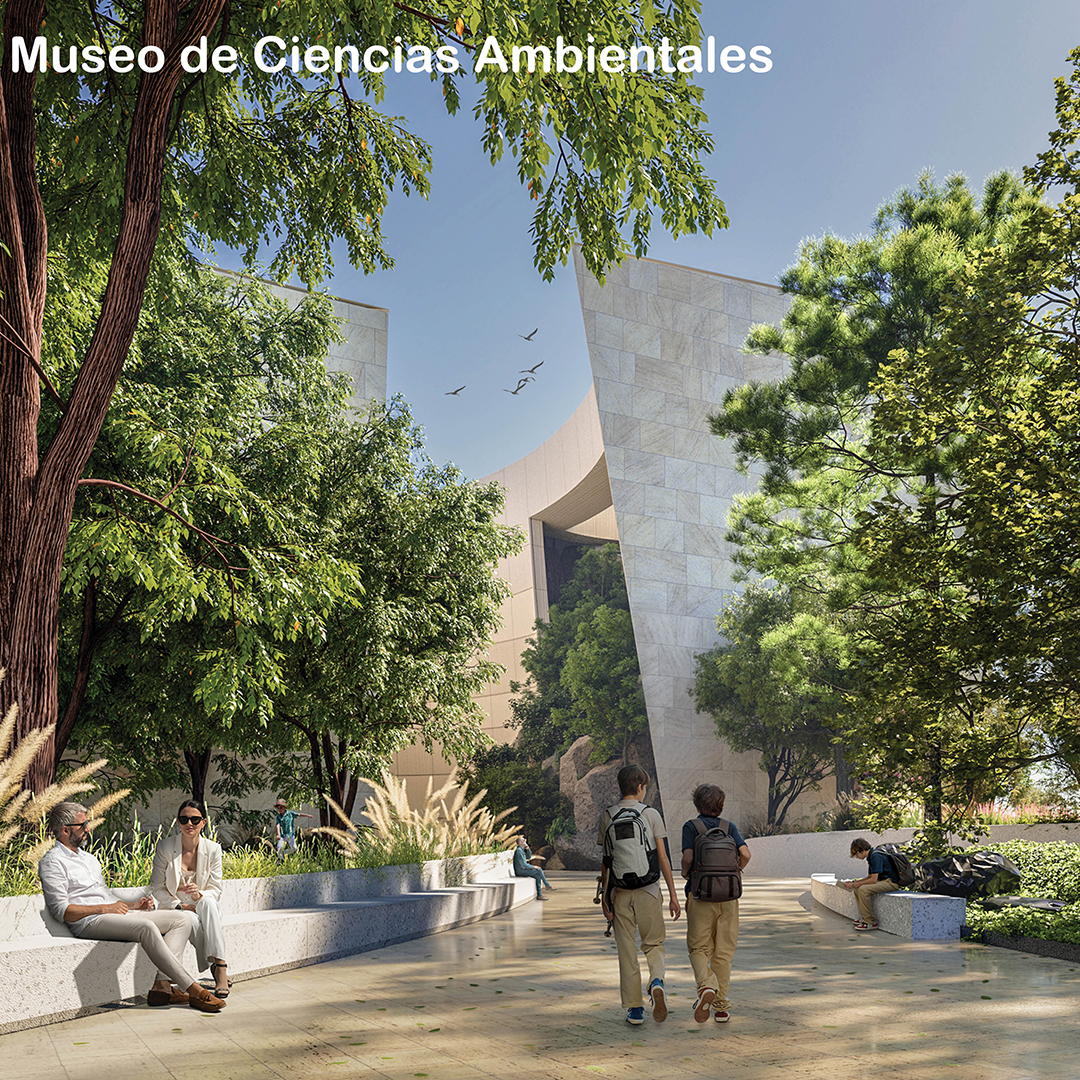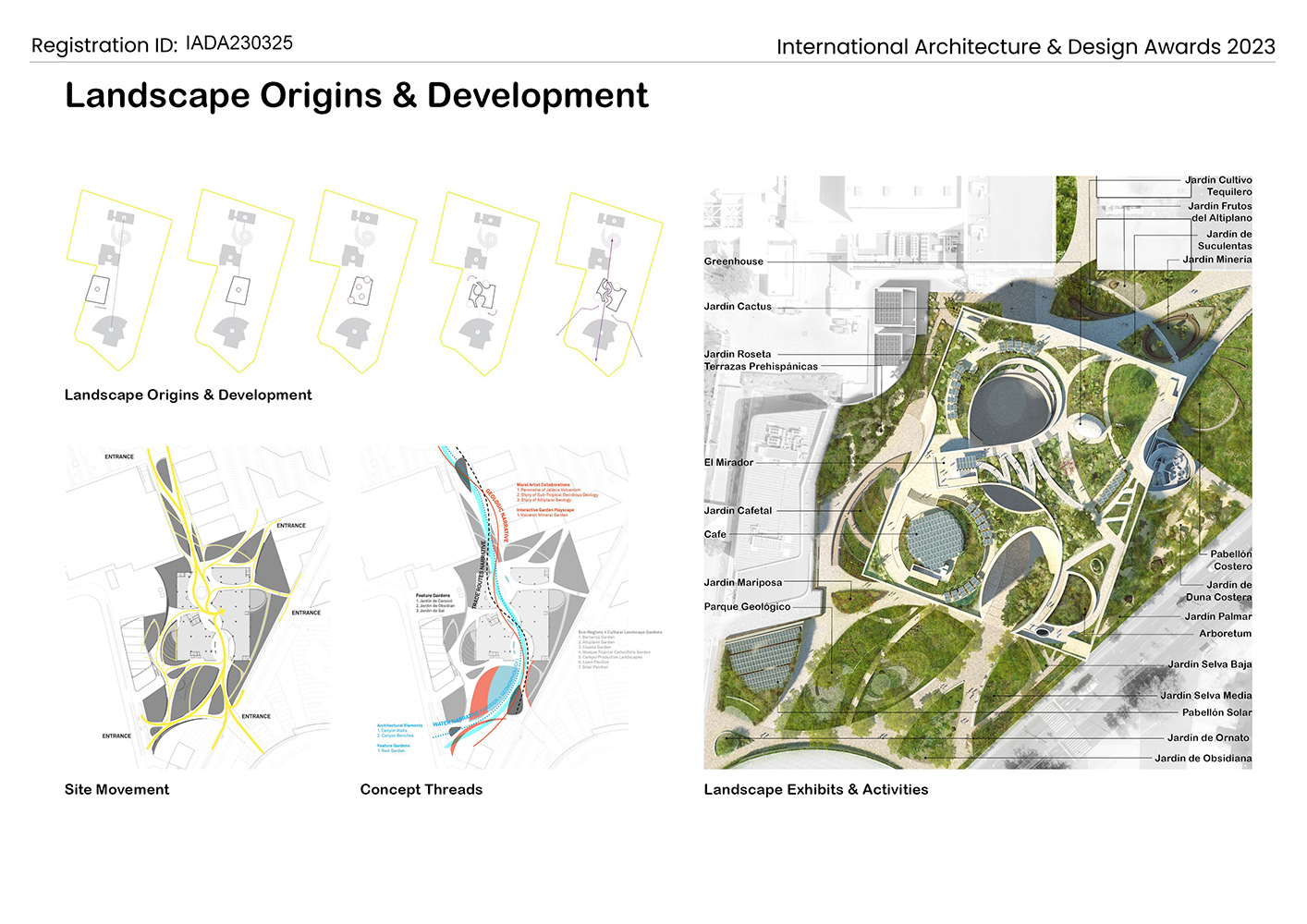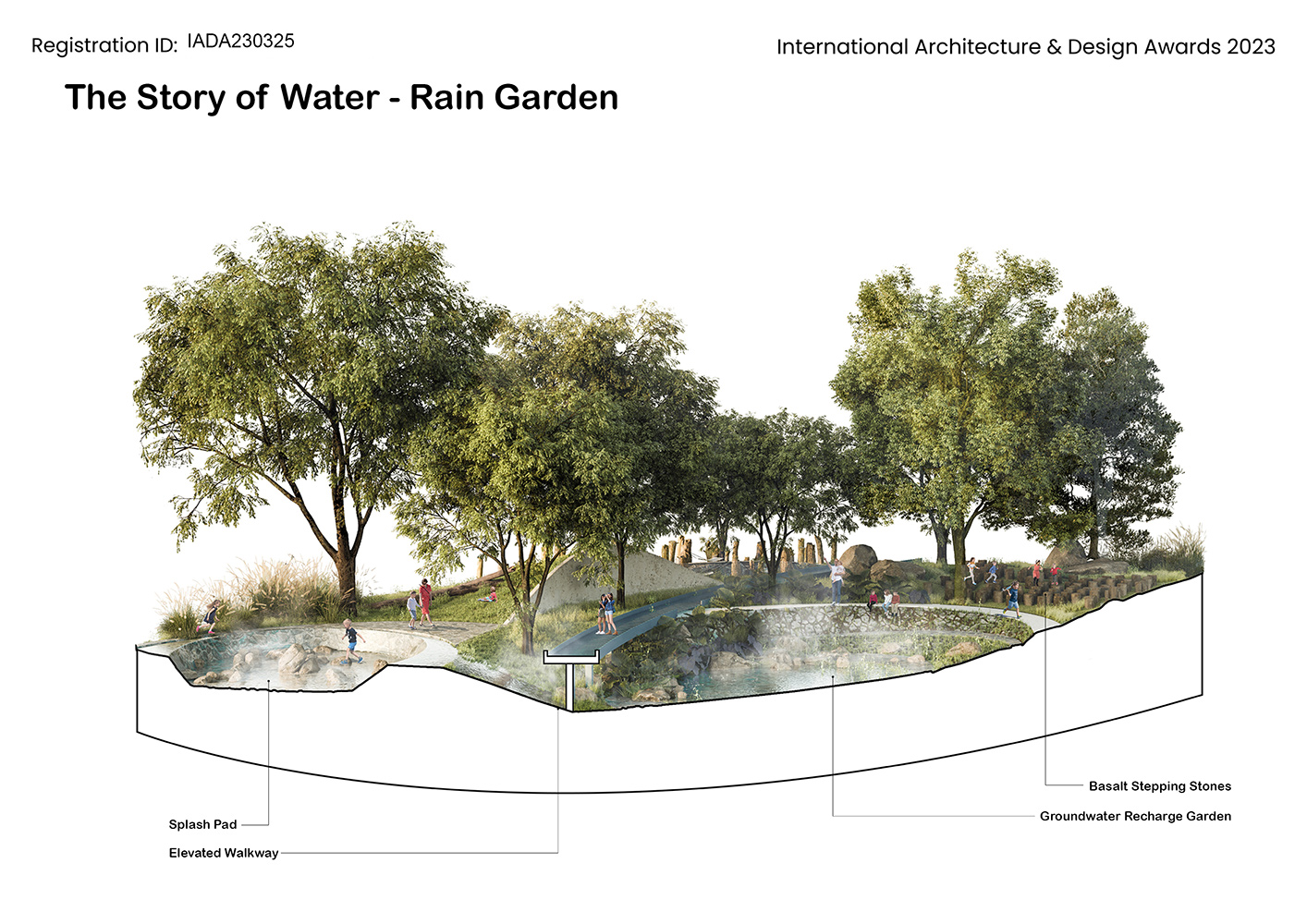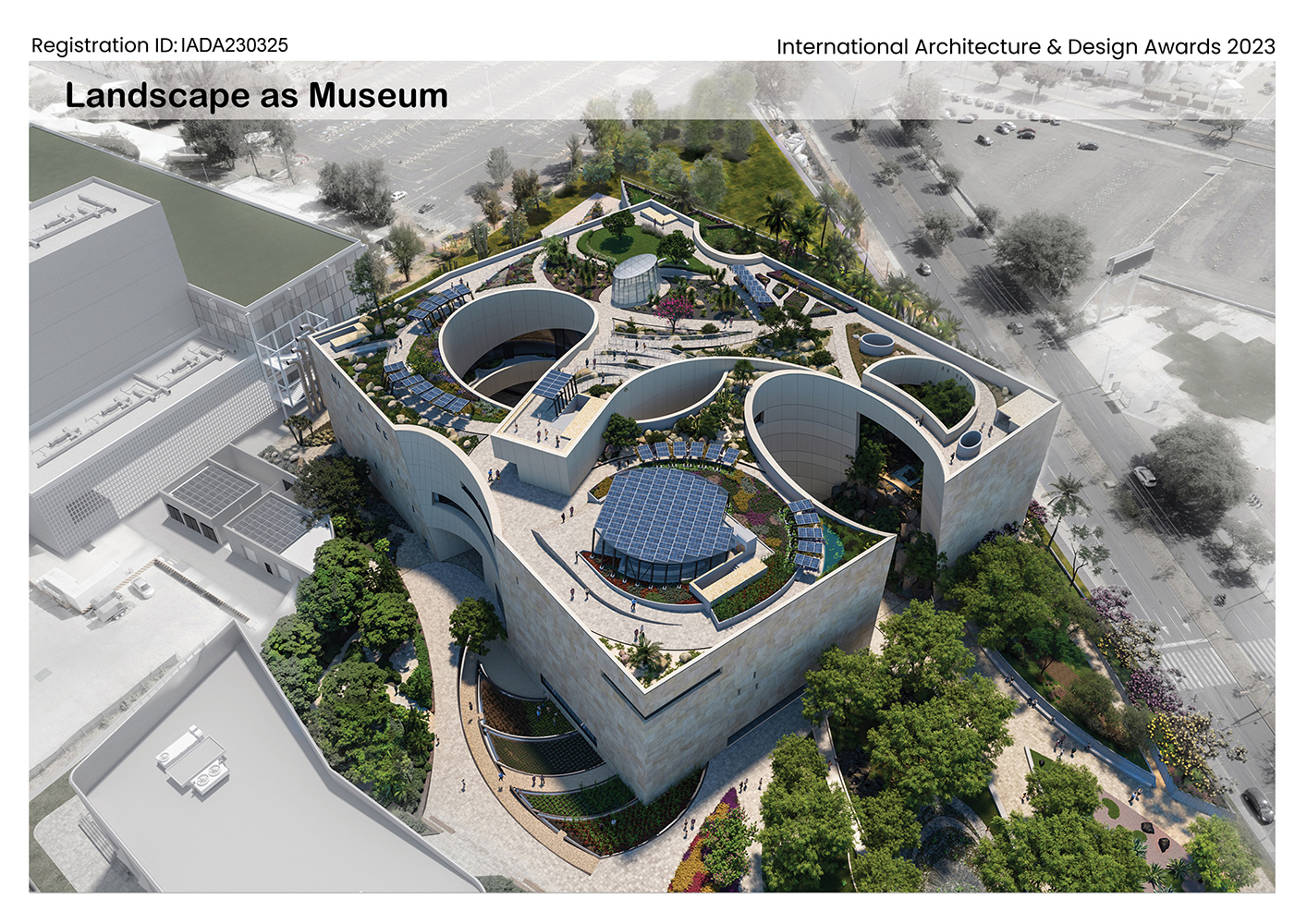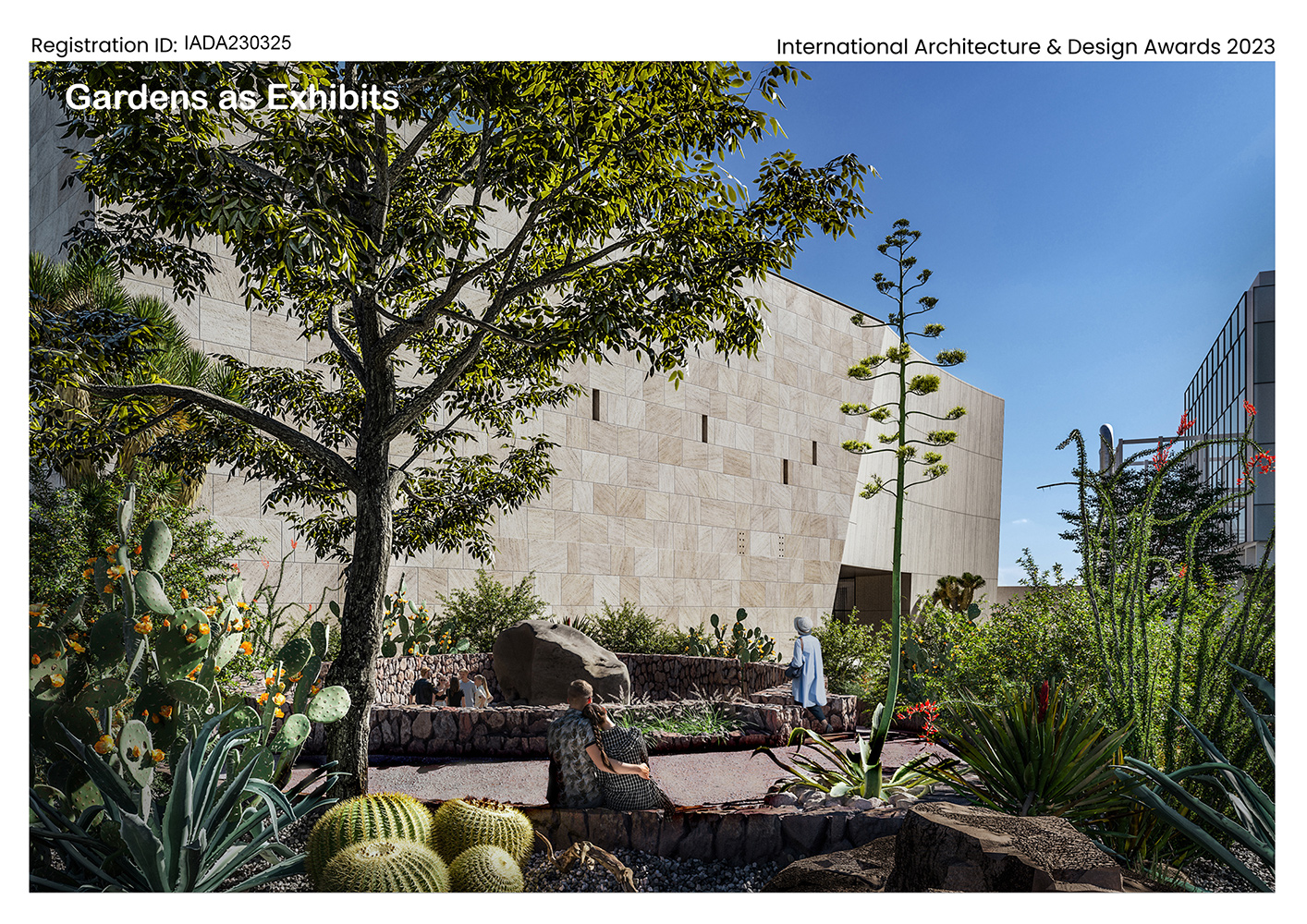Gold Winner of the International Architecture & Design Awards 2023
Architect / Designer:
Snøhetta
Studio:
Snøhetta
Design Team:
Landscape designer: Snøhetta
Scientific-Museological Narrative: University of Guadalajara, Snøhetta, Met Studio, Thinc Design
Landscape construction plans, renders & vegetation palettes: University of Guadalajara, JSa, Zap, Metroarquitectura, Monolito
Country:
United States
The landscape of the Museo de Ciencias Ambientales at the University of Guadalajara (Jalisco, Mexico) provides a holistic interpretation of the museum’s mission to understand the city and to inspire the conservation of nature that sustains it.
The 2.6-hectare garden is the Museum’s first exhibit. Multiple entrances allow for access permeability as pedestrian circulation flows through the central “canyon” of the Museum building, evoking the deep Santiago River ravine, which delimits the Guadalajara Metropolitan Area. Visitors are immersed in the biodiversity of western Mexico with over 450 species of native plants of Pine-oak, Tropical, Coastal, Arid, Wetland, and Agricultural vegetation.
Inspired by the confluence of cultural and natural forces that have created the rich landforms of the region, the landscape design displays the connections and interdependencies within the urban-rural divide. The materials and planting palette selected address three thematic threads: regional agricultural processes, water, and nature-based commerce. Entering from the north, visitors encounter the Salt and Mineral Gardens, and then move onto the Obsidian and Seashell Gardens. These coveted trade goods linked European, Asian, American, and local Indigenous cultures. The variety of hardscape surface materials, including stone, gravel, sand, shells, and textured concrete, are selected for both durability and resonance with the vernacular landscapes. The thematic gardens and paths activate spaces for education, relaxation, and community gatherings.
The story of water erosion extends into the museum gardens where seating and retaining walls appear to be carved remnants of a larger form. Water in its different states appears throughout the landscape from an evaporating scrim of water that alternates with an elliptical active fountain, to the raingardens punctuated by 24 recharging groundwater wells. Additional blue-green infrastructure permeates the landscape with air-collecting geo-cooling pipes, solar panel pergolas on the rooftop cafeteria, and roof-water capturing mechanisms for irrigation, all contributing towards climate change mitigation (LEED).
Evoking the four-thousand-meter altitudinal gradient of Western Mexico, the ground-level gardens climb to the rooftop by way of a cloud forest arboretum that contains a 25m waterfall that emerges from the building. The roof gardens connect visitors to the galleries within the museum. Pathways are organized to frame views outwards to the surrounding natural and built environment, as well as to the canyon spaces below. The experience culminates in the “El Mirador” vantage terrace, which allows visitors to contemplate the city and its dependence on the surrounding mountains and rivers. This immersive landscape experience is one that can be enjoyed by everyone.
The landscape of the Museo de Ciencias Ambientales at the University of Guadalajara (Jalisco, Mexico) provides a holistic interpretation of the museum’s mission to understand the city and to inspire the conservation of nature that sustains it.
The 2.6-hectare garden is the Museum’s first exhibit. Multiple entrances allow for access permeability as pedestrian circulation flows through the central “canyon” of the Museum building, evoking the deep Santiago River ravine, which delimits the Guadalajara Metropolitan Area. Visitors are immersed in the biodiversity of western Mexico with over 450 species of native plants of Pine-oak, Tropical, Coastal, Arid, Wetland, and Agricultural vegetation.
Inspired by the confluence of cultural and natural forces that have created the rich landforms of the region, the landscape design displays the connections and interdependencies within the urban-rural divide. The materials and planting palette selected address three thematic threads: regional agricultural processes, water, and nature-based commerce. Entering from the north, visitors encounter the Salt and Mineral Gardens, and then move onto the Obsidian and Seashell Gardens. These coveted trade goods linked European, Asian, American, and local Indigenous cultures. The variety of hardscape surface materials, including stone, gravel, sand, shells, and textured concrete, are selected for both durability and resonance with the vernacular landscapes. The thematic gardens and paths activate spaces for education, relaxation, and community gatherings.
The story of water erosion extends into the museum gardens where seating and retaining walls appear to be carved remnants of a larger form. Water in its different states appears throughout the landscape from an evaporating scrim of water that alternates with an elliptical active fountain, to the raingardens punctuated by 24 recharging groundwater wells. Additional blue-green infrastructure permeates the landscape with air-collecting geo-cooling pipes, solar panel pergolas on the rooftop cafeteria, and roof-water capturing mechanisms for irrigation, all contributing towards climate change mitigation (LEED).
Evoking the four-thousand-meter altitudinal gradient of Western Mexico, the ground-level gardens climb to the rooftop by way of a cloud forest arboretum that contains a 25m waterfall that emerges from the building. The roof gardens connect visitors to the galleries within the museum. Pathways are organized to frame views outwards to the surrounding natural and built environment, as well as to the canyon spaces below. The experience culminates in the “El Mirador” vantage terrace, which allows visitors to contemplate the city and its dependence on the surrounding mountains and rivers. This immersive landscape experience is one that can be enjoyed by everyone.
Snøhetta
For more than 30 years, Snøhetta has designed some of the world’s most notable public and cultural projects. Snøhetta kick-started its career in 1989 with the competition-winning entry for the new library of Alexandria, Egypt.
Since its inception, our global practice has maintained its original transdisciplinary approach, integrating architectural, landscape, interior, product, graphic, digital design and art across its projects. The collaborative nature between Snøhetta’s different disciplines is an essential driving force of the practice.
Other notable works by Snøhetta include the Norwegian National Opera and Ballet as well as the National September 11 Memorial Museum Pavilion in New York.


